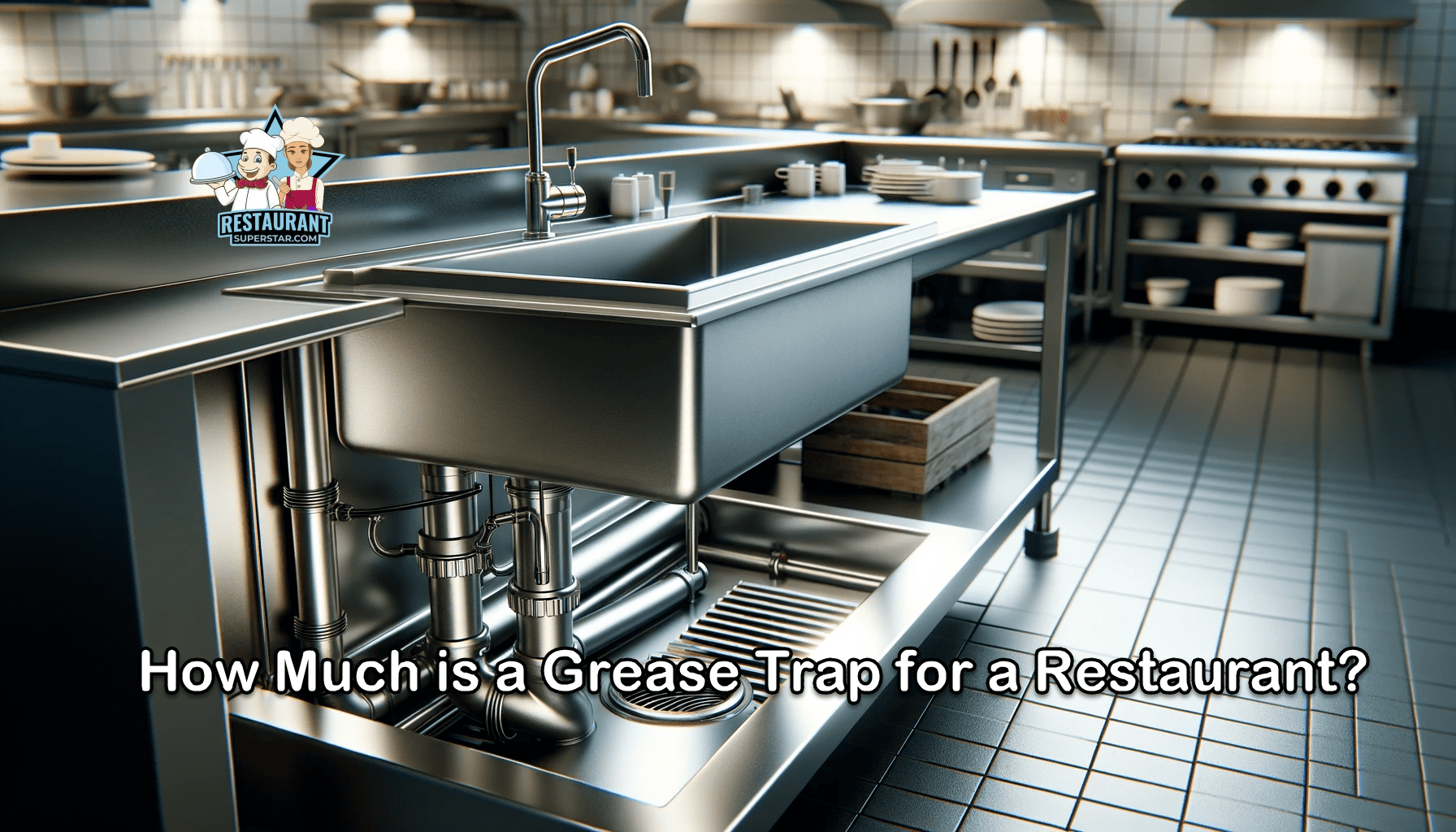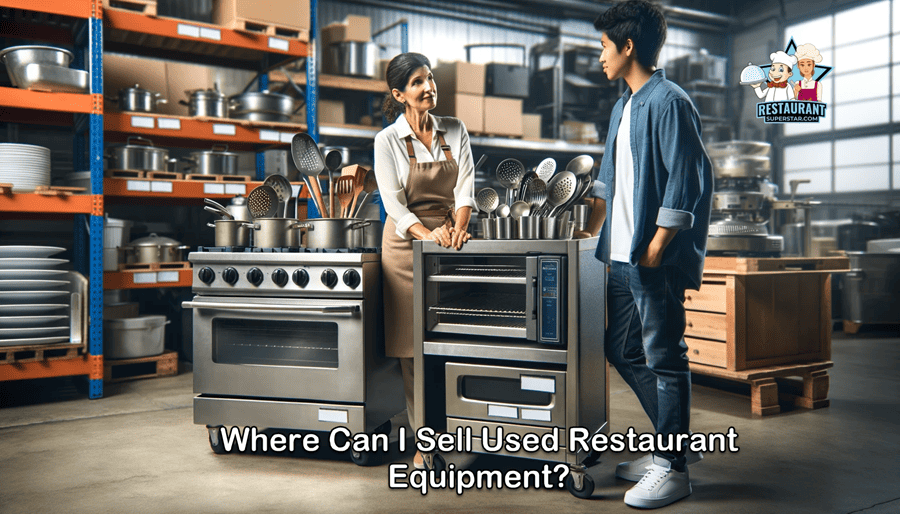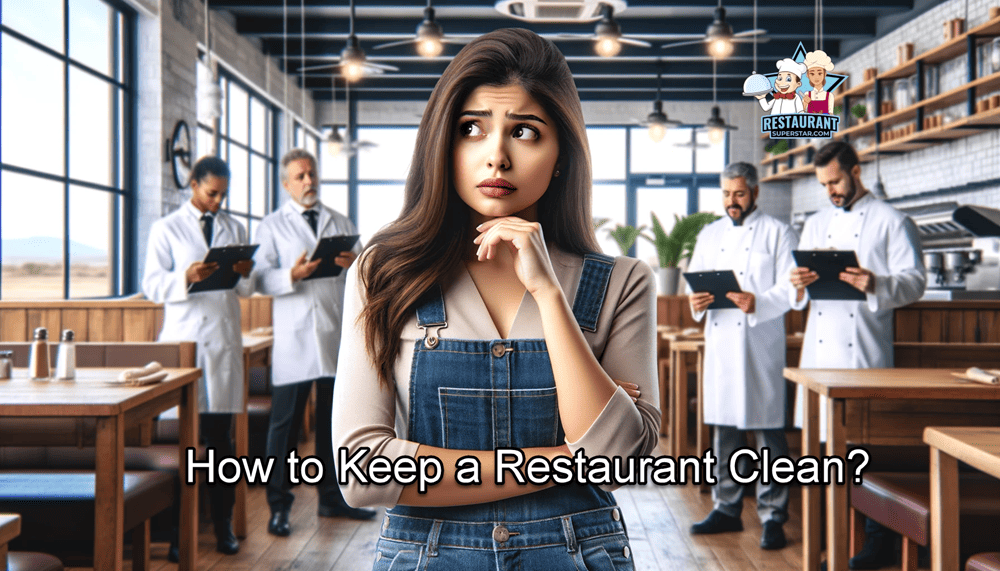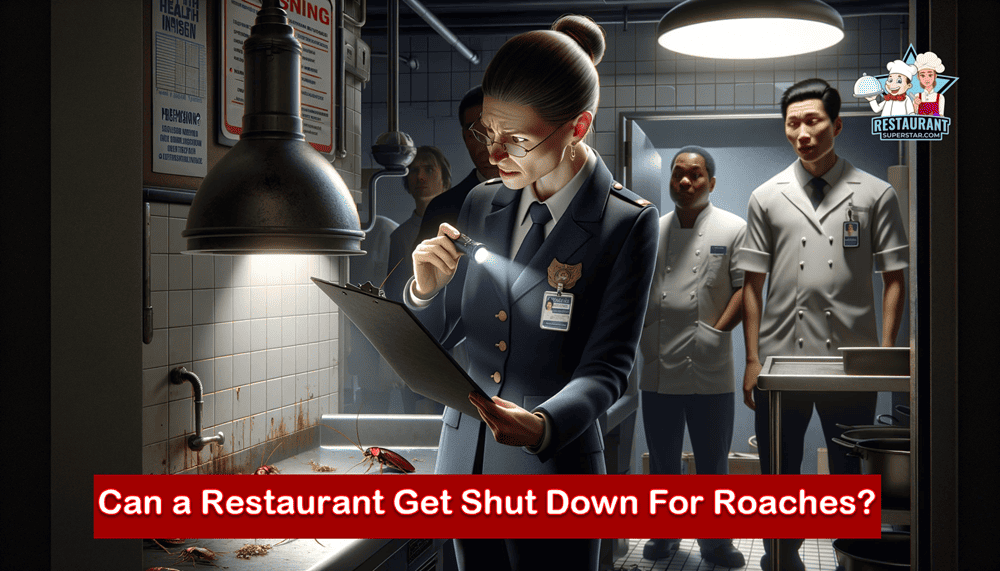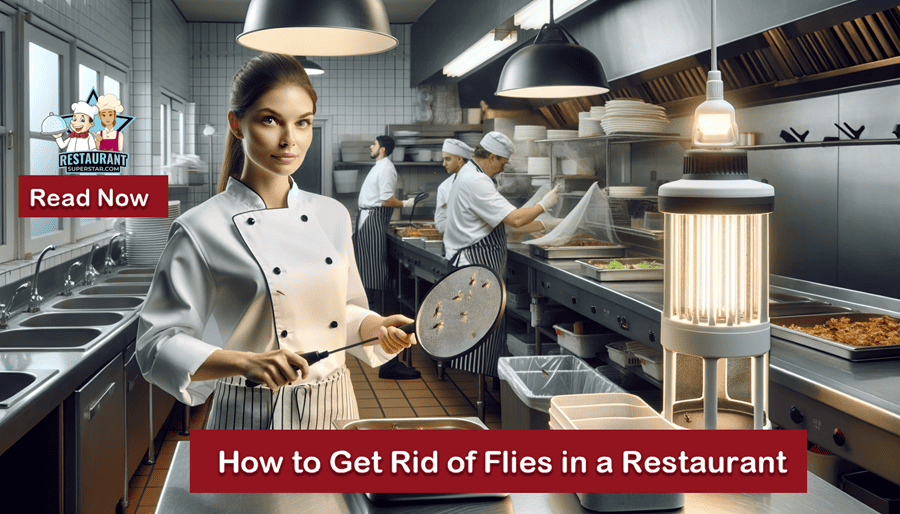How To Save a Failing Restaurant – 19+ Tips

Hey There, Welcome to RestaurantSuperstar.com. If you are a restaurant owner looking for information on how to save a failing restaurant, you are in the right place.
This article will go into great detail on that question and other restaurant business-related questions. If you find this article helpful, please share it with a few of your friends.
How to save a failing Restaurant?
How to save a failing restaurant? Evaluate your business and know your operational costs. Eliminate slow sellers from your menu. Consider adjusting your hours to save labor during slow times. Negotiate with your food suppliers to bring down costs. Reduce food waste. Take advantage of social media.

Being a restaurant manager is not an easy job. You can go insane juggling all these obligations if you also worry that you are managing a failing restaurant.
Here, we show you how to recognize warning indications that a restaurant is in trouble.
Then, by examining a restaurant’s critical success characteristics and creating a restaurant rescue strategy, we demonstrate how to save a failing restaurant.
How to save a failing Restaurant – Step-by-Step Guide
1 – Evaluate Your Business
Considering things from the client’s point of view is the most significant way to get society’s view on customer service.
Use this to share your thoughts on a recent eating experience. Which aspects of your encounter did you like?
Was there any room for development? You could use these questions to evaluate your services.
2 – Know Your Operational Costs
Although challenging, managing your operating expenditures is crucial to owning a restaurant. Understanding where your money goes and monitoring statistics like prime cost, labor prices, and food costs also alerts you when to rationalize things so you can avoid slipping into the red.
3 – Spruce Up Your Menu
It’s challenging to get the ideal blend with a menu. You don’t want to sell a little bit of everything, but you also don’t want to be overly broad since it will turn people away.
Customers don’t like restaurants that provide pizza, tacos, sushi, and other foods simultaneously.
Find what works effectively for you (your most well-liked dishes) and keep with it to make a menu that never fails.
Make sure the pricing on the menu is exact, and there are no typos, and think about employing a skilled photographer to take better images of your food.
3 – Check In With Your Staff
Set a weekly or monthly alert on your calendar to check in with various staff 30 minutes before or after their shift.
To give the employees the feeling that they can speak freely with you without being intimidated by the workplace or other coworkers.
Consider meeting in a neutral location, like a local coffee shop. You might also consider holding a neighborhood walking meeting and whatever suits you and your partner the best.
4 – Consider Adjusting Your Opening Hours
Have you always considered ways to increase restaurant patronage? Changing your operating hours is one of the most straightforward restaurant turnaround strategies.
You want to be open when clients are most inclined to stop by. Consider opening earlier and offering breakfast options if your business opens at noon. Open later on the weekends or provide some brunch specials.
5 – Use a Table Booking System.
You may serve more clients each day and boost profits using table reservation systems that let customers reserve a seat and place an order beforehand. Put this into action, mainly if you see folks departing due to the delay.
6 – Organize Special Events
Plan entertaining activities and festivities to increase patronage at your restaurant.
Consumers will buy more and often return if there are Friday beverage specials. When it comes to enticing consumers, restaurants often go outside the box, which is one of the reasons they are exceptional.
7 – Build a Relationship With Repeat Customers
Ensure your clients know you keep them in mind and value their patronage if you want to turn around a restaurant.
How? by occasionally sending over a drink or dessert.
Give people a reason to commend you because what they post about you on social media matters significantly.
8 – Analyze Your Finances
The route to mastering restaurant financial management is challenging. Where does the majority of your cash go?
Are you making too little money and spending too much?
Putting your spending into perspective will help you identify where you can make savings and how you might repurpose money to get by.
The most essential thing to consider is the difference between your food expenses and prices.
To succeed, you must have a sufficient margin of safety. If not, try to lower the price or find another vendor.
If you are unwilling to make adjustments, you will be unable to learn how to turn around a failing restaurant.
9 – Go Through Customer Reviews
Customer reviews are likely to blame for your restaurant’s poor reputation, so it’s essential to measure them.
If your restaurant frequently receives complaints about poor customer service, identify the problem and fix it right away.
Don’t forget to respond to client reviews and attempt to resolve their issues to prove to them and other customers that you value their feedback.
10 – Offer Online Delivery
The flexibility of a restaurant to adapt to technological development is one of its essential components. If your business doesn’t currently provide online ordering and delivery, you should because it will significantly increase your earnings.
11 – Rightsize Your Staff
Paying staff to wait for a client to enter the restaurant is improper. Hire the correct amount of servers. If you have more than clients, hire temporary workers to assist you when the restaurant is bustling.
12 – Use Social Media
In addition to having a presence on all major social media platforms (Facebook, Instagram, and Twitter), keep your page updated by sharing essential business news or blogging about your offers and discounts.
Consider running ads on Facebook and Instagram as well to increase visibility.
Don’t forget to add your restaurant to Yelp, TripAdvisor, and Google My Business. When promoting your restaurant online, you should aim for online visibility.
13 – Consider Refinancing
You can seek a bank or financial institution for more money if you aren’t making enough and your restaurant has problems. It’s not simple to obtain one, so consider this restaurant concept before moving forward.
14 – Bring In a Consultant
If establishing a restaurant was one of your dreams, you might be too involved to see what’s going wrong.
The best person to show you how to turn around a failing restaurant is a specialist, but this is an expensive option.
But don’t rely on the counsel of your relatives and friends.
They’re undoubtedly unqualified, and they might also try to make their response sound kind to avoid offending you.
15 – Decide Whether The Concept is Worth The Effort
It’s sometimes preferable to give up, take your losses, and figure out how to launch a business from scratch.
Instead of spending money on something that will inevitably fail, start with a brand-new concept.
Especially if you’ve put your heart and everything into your restaurant concept, we know that modifying it isn’t always easy. But it’s preferable to deceive yourself.
What is the value of my restaurant, you ask? If you cannot justify keeping it open, come up with a few additional ideas for restaurants that could be a hit before implementing the best one.
Make a list of everything you need to operate a restaurant before you begin the procedure to lessen the probability of getting caught off guard.
16 – Special Events
Special dining occasions urge people to explore your restaurant and return often.
You could, for instance, include a special event each day of the week. You may provide special dinners or half-price appetizers on Mondays.
The specials you offer at your restaurant will entice consumers to return frequently and spend more on other things on the menu.
17 – Turning Tables
Increasing the number of clients at the restaurant throughout the day is one way to boost sales. To make place for additional guests, your restaurant needs to turn the tables rapidly.
Each patron who leaves your restaurant before getting a table due to the delay costs you money.
Tell your workers and table cleaners to clear the tables swiftly. When customers finish their meal, bring them the check immediately without rushing them out the door.
18 – Supplier Shopping
For your restaurant, you will spend a lot of money on food., and your cost of products sold will be reduced by any price concessions you may work out with your food suppliers.
Look for alternative local food suppliers if your current food suppliers won’t negotiate on their prices.
How to save a Restaurant from closing?
How to save a restaurant from closing? Navigating a struggling restaurant back to success requires a blend of strategy and adaptability. Delve deep to identify core issues, then consider revamping your menu, enhancing service, and amplifying your marketing. Collaborations, community involvement, and diversifying services also help.
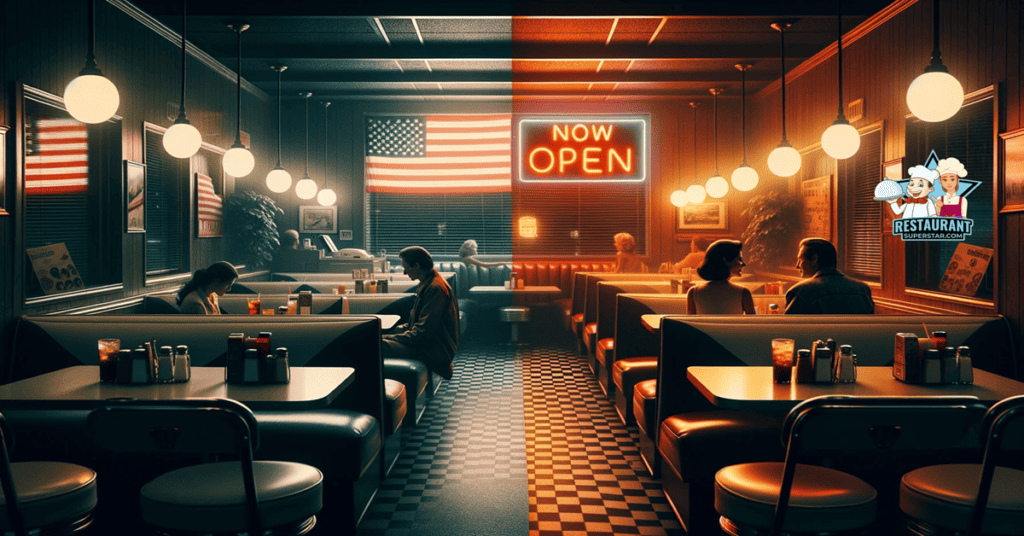
But here’s the kicker: this only scratches the surface. Dive deeper with us to Break the answer into details. How to save a restaurant from closing?
You know, I’ve worked with many joints that were on the brink, but with the right moves, we turned things around.
Here’s some personalized and tried-and-true advice for you:
- Dive Deep into the Issue: Understand why you’re hitting a rough patch. It could be dwindling customer numbers, high overheads, or that menu isn’t hitting the spot anymore. Get to the heart of it, and then we can strategize.
- Revamp That Menu: Look, tastes evolve, and so should your menu. Consider introducing fresh dishes, dropping the ones folks aren’t keen on, and tweaking current dishes. And always, always ensure you’re pricing things just right for your market.
- Step Up the Service: At the end of the day, customers remember how they’re treated. Equip your team to be the friendliest folks who know their menu inside out. And if someone does have a hiccup, address it immediately and with grace.
- Spread the Word: With the suitable offerings in place, you gotta let people know. From the classic newspaper ad to mastering Instagram or running Google Ads, find what works for your audience.
- Who Doesn’t Love a Good Deal? Roll out some enticing promotions, be it discounts, a happy hour that’s truly joyful, or a loyalty card system. Get people through those doors and come back for more!
- Trim the Fat: Not literally (unless that’s a menu change), but financially. Scan your expenses – could you get a better deal from suppliers? Is there any avoidable wastage happening?
- Collaborate and Thrive: Consider joining forces with local businesses. How about showcasing craft beers from that microbrewery down the road? Or indulging sweet tooths with desserts from the neighborhood bakery?
- Expand Your Offerings: Have you thought about catering? Birthday parties, corporate events, you name it – it’s an avenue worth exploring.
- Host Memorable Events: Think wine tastings that people chat about for weeks or maybe a cooking masterclass. Even a regular night with local musicians could become the talk of the town.
- Be a Community Champ: Become the restaurant that supports the local soccer team or helps raise funds for charities. You’ll be amazed at the positive buzz it creates.
Remember, every eatery faces its highs and lows. The key is adapting and taking proactive steps. And remember, organizations like the Small Business Administration are there to lend a hand to establishments like yours. Keep your chin up, and those ovens fired; you’ve got this!
What are Some Problems That a Restaurant May Have?
These are some problems a restaurant may have.
1 – Poor Customer Experience
2 – Stock Loss and Waste
3 – Poor Employee Retention
4 – High Labor Costs
How do you know if a restaurant isn’t doing well?
- In the middle of the day, the parking lot is vacant. If you enter during peak hours and the dining room is empty.
- Goods that should be in supply have run out.
- The restaurant has an odd or off odor.
- Your tables and chairs are sticky when you touch them.
- The table’s utensils and condiments aren’t clean.
- The workforce lacks organization, is tardy in greeting you, or doesn’t know the answers to basic inquiries.
- There are numerous specials and coupons available.
How do you sustain a restaurant business?
Reduce your water and electricity consumption. It’s simple to increase the sustainability of your business by making water and energy savings.
You can put timers on your lights, use the air conditioner less on good days by opening the windows, and install low-flow toilets and sinks in your bathrooms.
Eight Reasons Why Restaurants Fail
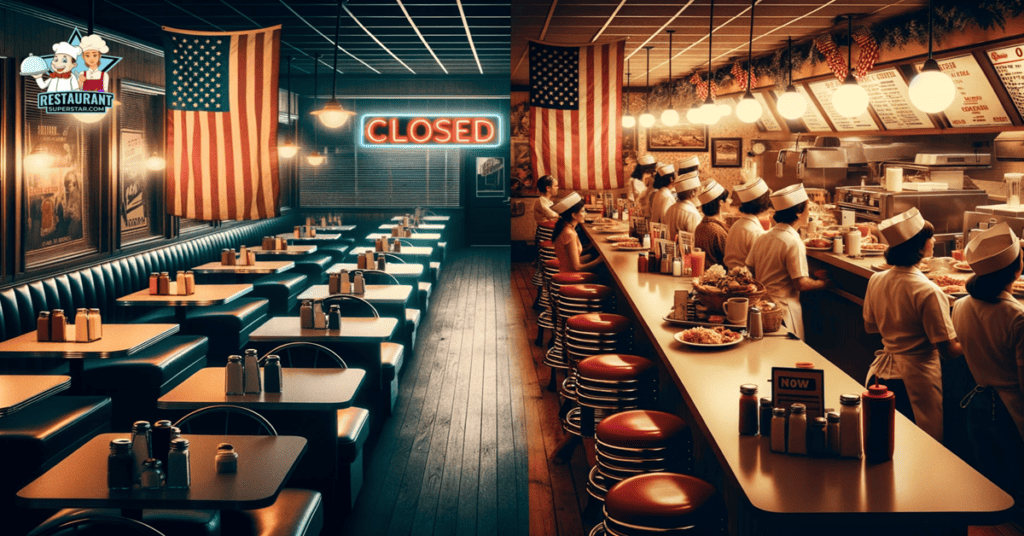
Many restaurants fail because people prefer to dine elsewhere and don’t generate enough money; many continue to fail. That happens typically for one or more of these causes.
1 – Bad staff management
The most effective managers are those who have, at some point in their lives, walked in the shoes of their workers.
Suppose you intend to run the restaurant alone. In that case, you should know that you will need a lot of management expertise because you will deal with staff members with varied skills.
The root of many restaurant failure tales is poor management.
2 – Bad customer service
Consumers want a tidy eating experience, particularly now that they can access the internet for complaints.
Making a solid first impression is essential since you need positive feedback. You can’t afford to wait around these days to find your unique style.
The demand for restaurant operators to get the service right from the start is high.
3 – Not enough starting capital
A firm might succeed or fail, depending on your initial investment and how you decide to use it.
Many restaurant owners risk investing their whole budget in a posh location.
When opening a restaurant, remember there will be additional expenses, such as supplies, food, remodeling, rent, personnel, advertising, etc.
4 – Lack of a clear vision
It is insufficient to have an excellent menu and a general restaurant concept.
Restaurants ought to have a documented mission and vision statement because it should serve as the foundation of the operation and serve to motivate the workers and customers alike.
What prompted you to open a restaurant? It’s not good enough to want to be rich.
Your company’s mission statement should tell a compelling tale that appeals to customers by drawing on feelings, experiences, and memories.
For instance, a restaurant in Italy might provide traditional fare to take clients back in time and give those who miss the nation an accurate perspective.
5 – No marketing
Neglect of advertising is another indication that a restaurant is in trouble. Here’s some sound restaurant advice: you still need advertising, even if your brand is well-known.
Just consider well-known chains like McDonald’s and KFC.
You must spread awareness and set yourself apart from the competitors — mainly if you run a small family business.
Create a marketing budget immediately, and if you can finance it, hire a marketing professional.
6 – Bad location
When starting a restaurant, location is critical., and make sure it fits with the idea of your restaurant.
For instance, picking a site in an area where the average age is 50 is a big zero if your target market is millennials.
Other location-related problems include low pedestrian traffic, poor visibility, high rent, and many nearby competitors. Is it simple to get to your restaurant’s building? What about parking? To discover how to overcome a poor location, you must first determine your target customer and then provide the answers to these questions.
7 – Lack of experience
This applies to everyone, but it is vital for the employer who, while working hard, lacks the knowledge necessary to run a business.
Not everyone can run a restaurant. The very worst in accountancy is reflected in this lack of knowledge and abilities.
To determine whether all is running correctly as a restaurant owner, you must know restaurant accounting practices.
Simply failing to update the information each time they change can spell disaster for a restaurant because you won’t be able to determine appropriate pricing.
Remember that you must spend a lot of money to hire an experienced person to salvage your restaurant.
8 – Hiring the wrong people.
Your staff’s performance will highlight adversely on your restaurant, whether due to a lack of abilities or a terrible attitude.
When hiring new employees, consider their soft skills and go beyond merely paying them.
Today’s workers value flexibility, the opportunity to develop on the job, wanting to attend conferences, etc. More than any amount of money that will inspire them.
FAQS
What percentages of restaurants fail?
Although measuring restaurant failure rates nationwide is challenging, the National Restaurant Association assesses the figure at 30%. One in every three eateries won’t make it past its first year in business.
Is managing a restaurant hard?
It’s challenging to manage a restaurant. It’s fast-paced and stressful. It also calls for a unique combination of abilities and personality qualities (most essentially, performing well under pressure)
CONCLUSION
If operating a restaurant is your ambition, don’t give up, even though the success rate of restaurants might be demoralizing. Instead, use these suggestions to turn around a struggling eatery.
Use these essential food service sector success characteristics to discover how to manage a restaurant profitably and expand a successful enterprise.
Jeff Smith is a Restaurant Consultant with over 20 years of hospitality experience ranging from server to owner and general manager. He focuses on Restaurant POS technology as well as restaurant marketing. Make sure to check out our world famous restaurant resources page for a comprehensive offering of hand picked resources and tools to help your business. You can also check out some of our other restaurant business articles.

